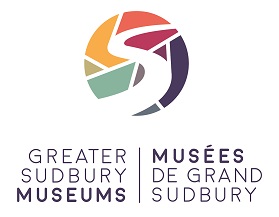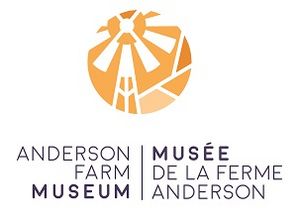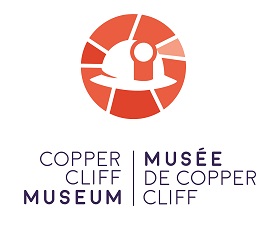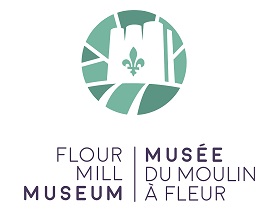Greater Sudbury Heritage Museums facts for kids
 |
|
| Location | Greater Sudbury, Ontario, Canada |
|---|---|
| Type | community history museums |
The Greater Sudbury Museums are a group of four cool history museums in Greater Sudbury, Ontario, Canada. These museums help us learn about the past of different communities. Three of them are in old, special buildings, and one is inside a library.
Contents
Anderson Farm Museum
The Anderson Farm Museum (46°25′56″N 81°08′52″W / 46.4322°N 81.1479°W) is located in Lively. It's on a large piece of land that used to be a dairy farm. This farm was owned by Frank and Gretta Anderson, who were immigrants from Finland.
The museum uses many of the original farm buildings. It also has an old paymaster's cabin from the Inco mining company. This cabin was moved to the farm in 1987 after the mining community of Creighton closed down.
Copper Cliff Museum
The Copper Cliff Museum (46°28′25″N 81°04′01″W / 46.4737°N 81.0670°W) is on Balsam Street in Copper Cliff. It is located in a log cabin on the site of the very first home built in the community. The log cabin itself was moved there in 1972.
This museum shows what life was like for a miner's family in the area. You can also see the baseball jacket of Thelma Jo Walmsley. She was from Copper Cliff and played for the Racine Belles in 1946. Her team won the championship in the All-American Girls Professional Baseball League. An Ontario Historical Plaque is also at the museum, honoring the Mine Rescue Station's important role in Ontario's history.
Flour Mill Museum
The Flour Mill Museum (Musée du Moulin-à-Fleur) (46°30′24″N 80°59′15″W / 46.5067°N 80.9876°W) is in the historic Flour Mill neighborhood. It was first located next to the Flour Mill Silos. Later, in the 1980s, it moved to its current spot on St. Charles Street.
The museum building was originally the home of François Varieur. He was the foreman of an early lumber mill in the Sudbury area. Later, the Manitoba and Ontario Flour Mill Company bought it. They used it as the home for their flour mill foreman.
The museum opened in 1974. It focuses on the history and life of the Franco-Ontarian community in the Flour Mill area.
Rayside-Balfour Museum
The Rayside-Balfour Museum (46°33′06″N 81°07′13″W / 46.5518°N 81.1202°W) is in Azilda. It is the smallest of the four museums. You can find it inside the community library branch. It has several small exhibits that show what farming life was like in the Sudbury Basin area long ago.
New Look for the Museums
In 2015, the museums decided to get a new look. They hired a local design company called Design de Plume. This company created fresh, new logos for each museum and a main logo for the Greater Sudbury Museums.
The idea for the new logos came from thinking about Greater Sudbury as a "patchwork community." This means it's made up of many different cultures and settlements. The new look and the motto "cultural mosaic" highlight how each area has its own special history. These unique histories then come together to form the Greater City of Sudbury. The idea of a "cultural mosaic" was inspired by a quilt made by Mrs. Carolyn Wahamaa. Her quilt showed how different towns and people, like Anglophones and Francophones, live together in harmony while keeping their own identities.
Online Resources
The museums have a website with videos and photos. It also has a lot of historical information about the region and its communities in the "Greater Sudbury Histories" section.
Besides the website, the museums offer other online resources:
- The INCO Triangle Digital Archives: This is an online version of the INCO Triangle. It was a monthly magazine for employees of the International Nickel Company from 1936 to 1998.
- Copper Cliff at War: This is an online exhibit about the former town of Copper Cliff. It covers the town's history up to the end of World War II. The Greater Sudbury Heritage Museums created this exhibit for the Virtual Museum of Canada.
- The Greater Sudbury Historical Database: This database was made with the Greater Sudbury Public Library. It has thousands of photos and references to the Main Library's collection of old newspapers and historical files. It's best to use simple keywords when searching.
- Greater Sudbury Memories: The Greater Sudbury Public Library created this project. It collects, saves, and shares stories from people who lived in Greater Sudbury. The website has a map of the area with audio and video interviews. These interviews share real stories about life in Greater Sudbury. The Greater Sudbury Heritage Museums have helped by providing video interviews for this project.
Museum Connections
The museums are connected with several important groups. These include the Canadian Museums Association, the Ontario Museum Association, the Canadian Heritage Information Network, and the Virtual Museum of Canada.




